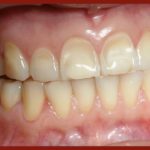
People with gastro-oesophageal reflux disease or symptoms have frequent gastric reflux which may cause heartburn and is a risk factor for oesophageal adenocarcinoma. Toothwear (abrasion, attrition or erosion) is reported in patients with gastro-oesophageal reflux disease or symptoms (GERD/S) with between 25-80% of patients with toothwear having GERD/S.
The aim of this review was to explore the association between erosive toothwear and gastro-oesophageal reflux disease or symptoms.
Methods
Searches were conducted in the Medline, Scopus, Embase and Web of Science databases from 1980 to August 2019. Case-controlled and cross-sectional studies published in English analysing the association between erosive toothwear and gastro-oesophageal reflux disease or symptoms (GERD/S) were considered. Two reviewers independently screened and selected studies. Data was extracted and the Newcastle Ottawa scale (NOS) used to assess study quality. There was a post-hoc decision to dichotomise the studies into two groups based on subjective and objectively measured GERD/S. Where possible, odds ratios (OR) and 95 % confidence intervals (CI) were derived and pooled in a meta-analysis.
Results
- 27 studies involving 8565 patients (5374 controls and 3191 with GERD/S) were included.
- 19 studies provided data for meta-analyses.
- Meta-analysis of 9 studies using objective measures of GERD/S indicated increased odds of erosive toothwear in individuals with GERD/S; OR = 4.13 (95%CI; 1.68 – 10.13) [I2 = 85%].
- Meta-analyses of 10 studies using subjective measures indicated increased odds of erosive toothwear in individuals with GERD/S; OR = 2.69 (95%CI; 1.13 – 6.38) [I2 = 97%].
- Meta-analyses of all 19 studies shows increased odds of erosive toothwear in individuals with GERD/S; OR = 3.29 (95%CI; 1.80 – 6.09) [ I2 = 95%].
Conclusions
The authors concluded: –
the results of this systematic review and meta-analysis indicate that individuals with GERD/S have a 2–4 fold increased odds ratio of also presenting with evidence of erosive toothwear compared with individuals who do not have GERD/S. Therefore, the promotion of appropriate preventive dental care should be considered for individuals with GERD/S, including timely referrals to oral health service colleagues from gastroenterology and vice-versa.
Comments
The authors have adopted a sound methodological approach and searched a good range of databases although restricting inclusion to English language studies may have excluded some relevant studies a point noted by the authors. The authors highlight that a post-hoc decision was made to classify the studies into those using subjective and objectively measures of GERD/S. The odds of an association between erosive toothwear and GERD/S remained signification for most of the analyses conducted for the review. The authors also note that a number of the included studies are cross-sectional in natures so that the temporal association between GERD/S and toothwear cannot be assessed. Furthermore, a large number of the included studies did not make any adjustments for potential confounders such a dietary factors, age, sex or alcohol consumption. There are biologically plausible explanations to suggest an increase in toothwear with GERD/S and the findings of this review suggest higher odds of toothwear in patients with GERD/S. While NICE ( National Institute for Health and Care Excellence) recognise dental erosion in thier GERD guidance for children it is not mentioned in the adult guideline. Good quality prospective studies and trials would be beneficial to provide further clarification for the prevention and management of toothwear in patients with GERD/S.
Links
Primary Paper
Jordão HWT, Coleman HG, Kunzmann AT, McKenna G. The association between erosive toothwear and gastro-oesophageal reflux-related symptoms and disease: A systematic review and meta-analysis. J Dent. 2020;95:103284. doi:10.1016/j.jdent.2020.103284
Other references
NICE- Gastro-oesophageal reflux disease and dyspepsia in adults: investigation and management
NICE – Gastro-oesophageal reflux disease in children and young people: diagnosis and management
Picture Credits
By Финитор – Own work, CC BY-SA 3.0
